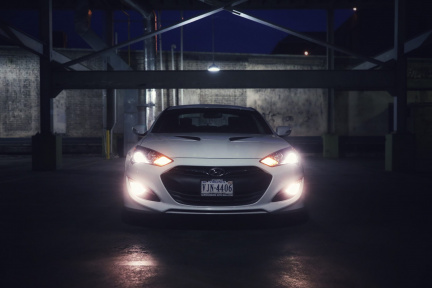
Many car enthusiasts who desire maximum car speed look for ways to gain more horsepower. Getting a catless downpipe is one of the ways to get it. But, firstly, you must know what precisely a catless downpipe is and the consequences you may get if you install this aftermarket part.
So, in this article, we’ll discuss what a catless downpipe is, its pros/cons, whether it’s legal or not, how much horsepower you can gain from it, and the warranty issues. Let’s begin!
What’s a Catless Downpipe?
A catless downpipe is a non-OEM part that helps you gain extra horsepower. But why is it called “Catless?” It is called so because it comes without any catalytic converter, also known as CAT.
The role of CAT is to convert toxic emissions into non-toxic gases. A conventional downpipe comes with 2 CATs. One of them lessens the power of hydrocarbon toxins, while the other CAT diminishes the toxins of nitrogen oxide gases.
Why are the CATs significant? It is because your automobile won’t pass the emissions test without them. This test determines if your car is environment-friendly or not. And, if it isn’t, you won’t be allowed to drive the vehicle on the streets.
The CATs design copies the structure of honeycomb, making it restrictive. In a nutshell, it creates back-pressure to extract toxins, which reduces the horsepower, making the emissions less harmful.
So, that’s why some people might want to install a catless downpipe to get maximum horsepower.
Catless Downpipe- Significant Details:
Let’s look into all the details you should know about the Catless downpipe.
Horsepower:
After installing a catless downpipe and tuning, your car can get a speedup of almost 50 horsepower. On the other hand, without tuning, you may get 25 horsepower. These numbers might vary depending on the car’s engine and turbo size.
Legality:
Catless downpipes are illegal in the majority of countries, including the USA. As discussed above, they exhibit dangerous gases which highly contribute to pollution. That’s why you can’t install it in the car casually and expect to drive on the roads daily. Also, your vehicle would immediately fail all emission tests like OBD2 and other visual plus sniffer checks.
Warranty:
You will only face warranty issues if installing a non-OEM part like a catless downpipe causes direct damage to the other parts of the vehicle. For example, if you get a problem with the exhaust system or turbo, and it happens due to the aftermarket part, your warranty will become nullified.
But, if the damage to some car components isn’t related to your modification, you can still claim your warranty. Also, your warranty is protected under the Magnusson Moss Act. So, the dealer would need to prove to you whether it was the effect of your modification that created issues in the car or not.
Check Engine Light:
The catless downpipe releases harmful gases, making the O2 sensor detect them and turn on the check engine light. You can avoid this by getting your car tuned. That way, your check engine light will remain off.
Tuning:
The tuning is highly recommended after the installation of the catless downpipe. That’s the only way your automobile can access the maximum horsepower, which is almost 50. Also, tuning is necessary to ensure that the car’s overall performance doesn’t degrade.
Pros:
The catless downpipe is only helpful if you are a car racer who needs that extra speed and horsepower. Also, you can only drive the vehicle with a catless downpipe on offroad tracks.
Cons:
It releases extremely hazardous gases
A threat to the environment
Illegal in many countries, including the US
Conclusion
Those interested in speeding might check out catted downpipes instead of catless because you can’t legally drive with it on the streets regularly. So, you might as well check into catted downpipes that provide a bit less horsepower but aren’t much dangerous for the environment. Also, they are legal. As for catless downpipes, you can only benefit from them on offroad tracks.
Same articles

Bridgestone Potenza Re980as vs Michelin Pilot Sport A/S 3 (W- or Y-Speed Rated): What is better to choose?
GuidesIt's time to replace the all-season tires on your car, and you're trying to decide between

2020 Honda Ridgeline: Is it worth it?
GuidesThe 2020 Honda Ridgeline carves out its own niche among pickup trucks. It's not as burly as a full-size truck, but it has more towing and hauling capability than most crossover SUVs. This...

What are car speakers for and should they be installed?
GuidesCar speakers serve two main purposes. The first is to provide high-quality sound reproduction of music, and the second is to act as a safety measure by amplifying sounds from outside the vehicle...
